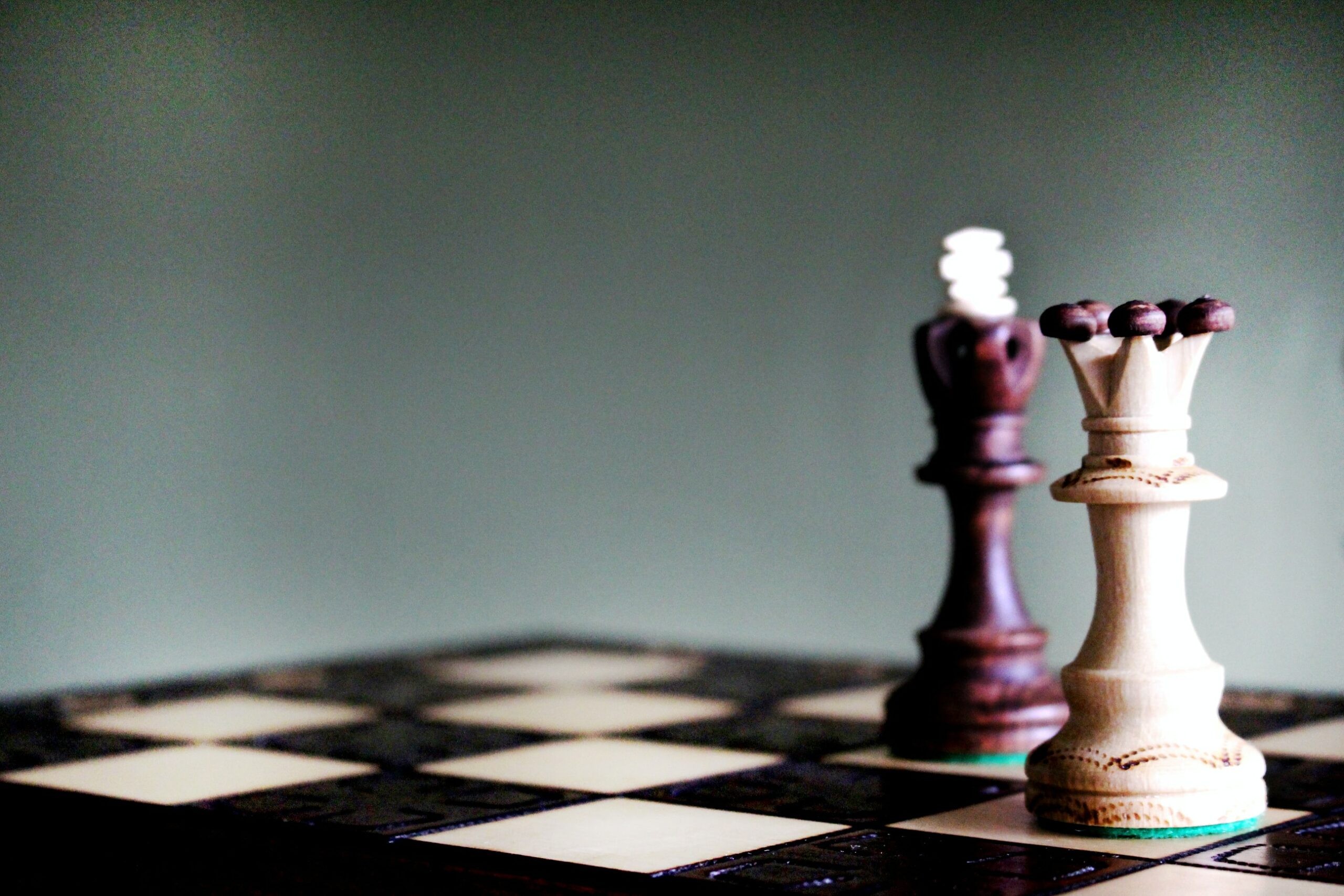Chess is a game of strategic maneuvers, where every move can have a significant impact on the outcome. Among the various pieces on the chessboard, the queen holds a place of utmost importance. Its versatility and power make it a formidable force, capable of turning the tide of the game.
However, losing the queen can be a devastating blow, often leading to defeat. In this article, we will explore valuable insights and expert strategies to help you avoid losing your queen in chess.
From understanding the significance of the queen to analyzing pawn structures and defensive maneuvers, you’ll gain the knowledge necessary to protect your queen and dominate the game.
How crucial is the queen in a game of chess?
The queen is undoubtedly the most powerful piece on the chessboard. It possesses the ability to move in any direction—horizontally, vertically, or diagonally—with no limit on the number of squares. The queen’s importance lies in its combination of range, flexibility, and attacking prowess.
Losing the queen diminishes your ability to launch strong offensives and defend against opponent attacks. Hence, preserving the queen becomes crucial for maintaining control and seizing opportunities.
What are the common mistakes that lead to losing the queen?

Losing the queen in a game of chess can be a devastating setback. To avoid such a catastrophe, it’s essential to be aware of the common mistakes that often lead to the loss of the queen. Here are some common mistakes to watch out for:
-
Rushing the queen into the center without proper support.
-
Neglecting the queen’s safety during the opening phase.
-
Falling for opponent traps and overlooking tactical threats.
-
Failing to anticipate counter-attacks aimed at the queen.
-
Lack of awareness regarding potential weaknesses around the queen.
How can you protect your queen from early attacks?
During the opening phase, the queen is vulnerable to attacks from opponent pieces. To safeguard it, focus on developing your minor pieces first—knights and bishops—before moving the queen. This allows you to establish a solid foundation and maintain control over the center squares.
Utilize pawn moves to shield the queen and avoid unnecessary risks. Remember, a cautious approach in the early stages can pay dividends in the later stages of the game.
What are the key defensive maneuvers to keep your queen safe?
Mastering defensive maneuvers is crucial for protecting your queen. Utilizing your pieces to create a strong defense around the queen is a key strategy. Develop your pieces harmoniously and place them strategically to guard important squares.
Castling early can provide additional safety to your king, indirectly offering protection to the queen. Employing tactics like pinning, skewering, and blocking opponent pieces can also deter attacks on the queen.
How can pawn structures influence the safety of your queen?
Pawn structures play a significant role in determining the safety of your queen. Isolated pawns, which lack pawn support on adjacent files, can create potential weaknesses around the queen. It is important to focus on piece activity and reinforce vulnerable areas.
Doubled pawns, on the other hand, may limit the queen’s mobility. To compensate, utilize open files for improved piece coordination. Pawn chains can provide a strong defense for the queen, so strengthening the chain and controlling key squares become essential.
Additionally, passed pawns can divert your opponent’s attention away from the queen, allowing you to capitalize on their potential. Analyzing and understanding pawn structures can give you a strategic edge in safeguarding your queen.
| Pawn Structure | Influence on Queen’s Safety | Recommended Strategies |
|---|---|---|
| Isolated Pawns | Potential weaknesses around the queen | Focus on piece activity and pawn support |
| Doubled Pawns | Can limit the queen’s mobility | Utilize the open files for piece coordination |
| Pawn Chains | Can provide a strong defense for the queen | Strengthen the pawn chain and control key squares |
| Passed Pawns | Can divert the opponent’s attention from the queen | Capitalizing on the passed pawn’s potential |
| Blocked Pawns | May restrict the queen’s movement | Seek opportunities to break open the position |
Are there specific opening strategies to minimize the risk to your queen?
In the opening phase, employing specific strategies can minimize the risk to your queen. Choose openings that prioritize piece development and central control, such as the Italian Game or the Ruy Lopez.
Following established opening principles can minimize tactical vulnerabilities and create a solid foundation for your queen’s safety. Understanding opening theory, familiarizing yourself with common opening traps, and studying grandmaster games will further enhance your opening repertoire and protect your queen.
How do you anticipate and counter the opponent’s tactics aimed at the queen?

Anticipating and countering opponent tactics aimed at the queen requires vigilance and foresight. Stay alert for potential threats and develop a habit of analyzing your opponent’s moves for any signs of an impending attack on the queen.
Maintaining strong pawn structures, avoiding unnecessary exchanges, and utilizing tactical awareness are effective countermeasures. Additionally, creating diversions and initiating counterattacks can force your opponent to redirect their focus away from your queen.
What are the best ways to create a strong defense around your queen?
Creating a strong defense around your queen involves a combination of strategic planning and tactical awareness. Develop your pieces harmoniously, ensuring they cover key squares and support each other.
Castle early to safeguard your king and provide indirect protection to the queen. Maintain a solid pawn structure that reinforces your position and restricts opponent attacks. Creating a web of defenses fortifies your queen and makes it a challenging target for your opponent.
How can you leverage the power of other pieces to shield your queen?
Utilizing the power of your other pieces can significantly contribute to the safety of your queen. Knights and bishops can be positioned strategically to control crucial squares and provide cover for the queen.
Rooks can support the defense by occupying open files and doubling up, thereby adding an additional layer of protection. Coordinated piece play can deter opponent attacks and give your queen the freedom to exert its influence on the board.
What are the signs that your opponent is planning to target your queen?
Recognizing the signs that your opponent is planning to target your queen is vital for proactive defense. Frequent checks, pinning your pieces, or provoking weaknesses in your pawn structure are telltale signs of an impending attack.
Observing your opponent’s piece placements and their pawn advances can also provide valuable insights. Staying attentive and maintaining a strong defensive position can effectively thwart your opponent’s plans and maintain control over the game.
How can you recover from a compromised queen position?
In some cases, despite your best efforts, your queen might end up in a compromised position. When this occurs, it is crucial to remain composed and analyze the situation objectively. Look for opportunities to salvage the position by creating tactical complications or exploiting weaknesses in your opponent’s position.
Strategic sacrifices or positional maneuvers can help regain the initiative and turn the game in your favor. Remember, even with a compromised queen position, the game is far from lost, and resourcefulness can lead to surprising comebacks.
Are there tactical sacrifices that can be made to preserve the queen?
In certain scenarios, sacrificing material, including the queen, can be a strategic choice to preserve its safety. Known as “queen sacrifices,” these moves often lead to a tactical advantage, such as exposing the opponent’s king or creating a winning attack.
However, queen sacrifices should be carefully considered, as they require precise calculation and analysis. Studying famous games featuring queen sacrifices can provide valuable insights into when and how to employ this daring strategy.
How does board awareness help in protecting your queen?
Board awareness, or having a comprehensive understanding of the entire chessboard, plays a vital role in protecting your queen. Evaluating the position of your pieces, your opponent’s pieces, and the pawn structures can identify potential threats and weaknesses.
This awareness allows you to make informed decisions and formulate effective defensive strategies. Regularly practicing visualization exercises and analyzing diverse positions will enhance your board awareness and contribute to the safety of your queen.
What are the psychological aspects to consider when defending your queen?
Chess is not only a battle of moves and strategies but also a psychological contest. When defending your queen, consider the psychological aspects that can influence the game. Maintaining a calm demeanor, not revealing your concern, and projecting confidence can deter your opponent from launching aggressive attacks.
Additionally, creating complications and tactical complexities can put pressure on your opponent’s decision-making abilities, forcing them to make mistakes. Understanding and leveraging the psychological dimensions of the game can give you an edge in protecting your queen.
Can analyzing grandmaster games improve your queen’s safety?

Analyzing grandmaster games is an excellent way to improve your overall chess skills, including the safety of your queen. Studying the games of highly skilled players gain insights into their strategic thinking, opening choices, and decision-making under pressure.
Pay attention to how grandmasters protect their queen, anticipate threats, and utilize their pieces to counter opponent tactics. Analyzing and learning from these games enhances your understanding of chess dynamics and strengthens your ability to safeguard your queen effectively.
Closing Thoughts
Protecting your queen is a crucial aspect of mastering chess tactics. By understanding the significance of the queen, avoiding common mistakes, and implementing expert strategies, you can ensure its safety throughout the game.
Analyzing pawn structures, employing defensive maneuvers, leveraging the power of other pieces, and developing board awareness contribute to an effective defense. Remember, chess is a game of foresight, strategy, and psychological acuity.
Safeguarding your queen not only strengthens your position but also sets the stage for decisive victories. Master the art of protecting your queen, and watch as your chess skills flourish.




